Motorola Moto G Review - The Phone to Connect the Millions
Motorola touts the Moto G as the smartphone choice for the next 500 million customers. Does it really have what it takes to appeal to the masses? To achieve its super-affordable price tag, did Motorola cut any corners with the Moto G? Let's find out!
By HardwareZone Team -

Hello, Moto.
Overview
Since Google completed its acquisition of Motorola Mobility in May 2012, much attention had been focused on how Google planned to revigorate the Motorola brand under its wings.
Google wasn't very pleased with Motorola's products in the pipeline, and hired former Apple chief evangelist Guy Kawasaki as an advisor to the Motorola brand to focus on “product design, user interface, marketing, and social media”.
The collaboration between the two companies led to the unveiling of the Moto X, which Motorola claims to be "the first smartphone that you can design yourself" via MotoMaker. Unfortunately, the Moto X is currently only available in the U.S.
Back then, we were told specifically that the "Moto X is just the first device in a new portfolio of products that show the best of Motorola as a Google company" and that Motorola has "exciting plans for all regions". Three months after the launch of the Moto X, Motorola unveiled the global and more affordable Moto G. And as we just reported, this phone would very soon be available in Singapore. To start off the review, here's an overview of the specs of the two phones:
Moto G | Moto X | |
Display | 4.5-inch TFT LCD | 4.7-inch AMOLED |
Resolution | 1,280 x 720 pixels | 1,280 x 720 pixels |
Launch OS | Android 4.3 Jelly Bean
(upgradeable to Android 4.4 KitKat by Jan 2014) | Android 4.2.2 Jelly Bean
(upgradeable to Android 4.4 KitKat) |
Processor | Qualcomm Snapdragon 400 quad-core 1.2GHz | Qualcomm Snapdragon S4 Pro dual-core 1.7GHz |
RAM | 1GB | 2GB |
Storage | 8/16GB
(*8GB sold only in Singapore) | 16/32GB |
Front Camera | 1.3MP | 2MP |
Rear Camera | 5MP autofocus with LED flash | 10MP autofocus ClearPixel with LED flash |
Battery | 2,070mAh | 2,200mAh |
Dimensions | 129.9 x 65.9 x 6.0 ~ 11.6mm | 129.3 x 65.3 x 10.4 mm |
Weight | 143g | 130g |
Design
The Moto G sports a clean design with rounded corners, a tapered back and all buttons (power and volume control) are on the right side. This design philosophy breaks away from the norm where the power button is at the top left or right (in the case of the HTC Desire 601), or volume controls that are located on the opposite side of the power button (like the Samsung Galaxy S4 Mini). This isn't necessarily a bad thing as it prevents your fingers from reaching all over the phone to reach the buttons, and as they say, it really boils down to personal preference.

The metallic material of the buttons make them very easy to press.
Tapered backs are our favorite and the Moto G certainly lands itself on our list of palm-friendly devices. Unlike its rivals such as the LG Optimus F5 and Galaxy S4 Mini which have flat backs, the Moto G rests very comfortably in our hands. It also helps that the matte back cover gives a better grip than the typical glossy plastic surfaces that other phones of its class generally have.

The tapered back offers a better handling of the Moto G. You can also see the two different type of plastic used to construct the device.
Strangely though, Motorola uses two different kinds of plastic for the Moto G's chassis: a glossy one for the front and a matte one for the back. This reminds us of the LG Nexus 5, which employs different materials (and hence, different feels) for the white and black models. It's not a deal breaker or a concern, but we feel that the design could have been more uniformed. Overall, the build quality is good for the price you are paying.

Removing the rear cover will let you access the two SIM card slots in the Moto G.
As a Google company, Motorola follows the parent company's style of having on-screen navigation buttons. There is no physical or capacitive navigation key on the front panel of the Moto G. While on-screen buttons do take up a little screen estate, it beats having a malfunctioning physical or capacitive touch button.
No Moto Maker, But You Have a Splash of Colored Accessories to Choose From
Motorola made headlines with the MotoMaker for the Moto X, which allows customers to personalize the phone from the front to the back to the accent colors of the buttons. Sadly, this level of customization is not available to the Moto G.
The most likely reason is the fact that the Moto X is designed, engineered and assembled in Fort Worth, Texas. Motorola believes that there are several business advantages such as the ability to iterate on design much faster. It will be a huge undertaking for the company if it builds factories in the different regions where the Moto G is being sold.
Nonetheless, Motorola still managed to inject some degree of customization for the Moto G by offering a diverse range of colored accessories to match your tastes. For example, the back cover of the Moto G can be replaced with any of the colored grip or flip shells (blue, teal, red, yellow, purple, white, and black - take your pick).
We were told by the local distributor, Brightstar, that the flip shells will be available at launch for the Moto G. The current retail price of the shells is US$29.99. Brightstar is unable to provide the local retail price at time of publication.
Removing the back cover is done by placing your fingernail into the micro-USB port at the bottom and pulling it. The method is simple, but requires a fair amount of strength to execute.

The Flip Shell has a magnetic cover that wakes the display when you open it and puts it to sleep when you close it. (Image source: Motorola.)
Sharpest 4.5-inch HD Display in Its Class. No Kidding.
When one speaks of a phone in this price category, the common perception would be significant trade-offs in the display, processor and build quality of the device. We've discussed how that is not true for the design and build quality, and now we are debunking the next mistruth - the display.
Despite its price tag, the Moto G comes with a decently sized 4.5-inch screen with a 1,280 x 720-pixel resolution. To put that into perspective, the result is that the Moto G has a slightly higher pixel density (329ppi) than the Apple iPhone 5S and 5C (326ppi). Not that the difference is anything to shout out about though; just that none of the small screen Android phones from other major vendors comes close to the Moto G in this regard except the 4.6-inch Sony Xperia SP (319ppi) and the just announced 4.3-inch Xperia Z1 Compact (we're pretty sure the latter costs quite a bit more too).
After using the Moto G for a few days, we really like the display for its accurate colors and good viewing angles. In short, the display of the Moto G is impressive and exceeds our expectations. Its also makes the Moto G very easy to handle with one hand.

You will not be disappointed by the display quality of the Moto G.
There is but one oddity in Motorola's marketing campaign for the display of the Moto G. Calling it "an edge-to-edge display" that "stretches to all four corners of the phone" is an exaggeration and probably not fair to the LG G2. In reality, the bezel around the display is no different from what we've seen from other smartphones. If you want to know how an edge-to-edge display looks like, the G2 is a solid example as it boasts an insanely thin 2.65mm bezel.
Stock Android on a Non-Nexus Device? Almost.
At the launch event of the Moto G, Motorola stated that it strongly believes in providing a pure Android experience without the resource-hogging customized interfaces of other Android devices. In doing so, Motorola believes that the experience can complement Google's services, not compete with them.
Having said so, the Moto G ships with Android 4.3 Jelly Bean and is guaranteed an upgrade to Android 4.4 KitKat this month. At time of publication, our review unit has yet to receive the update.
For users who are switching from other Android vendors, the almost stock interface may seem a tad bare for them. The Moto G is stripped of the bells and whistles that other Android devices have, such as HTC's BlinkFeed, Samsung's Multi-Window, Sony's Small Apps and LG's QSlide. If any of these is a matter of life and death to you, the Moto G isn't for you.
The Android interface isn't entirely stock though. Any seasoned Nexus user will also notice the addition of two Motorola apps, Moto Assist and Moto Migrate. The camera interface is also different, and this will be discussed in the camera section later.
In a nutshell, Motorola Assist suggests actions to automate tasks, based on how you use your device. It allows you to automatically reply to texts when you're driving, silence your ringer during meetings, and more.
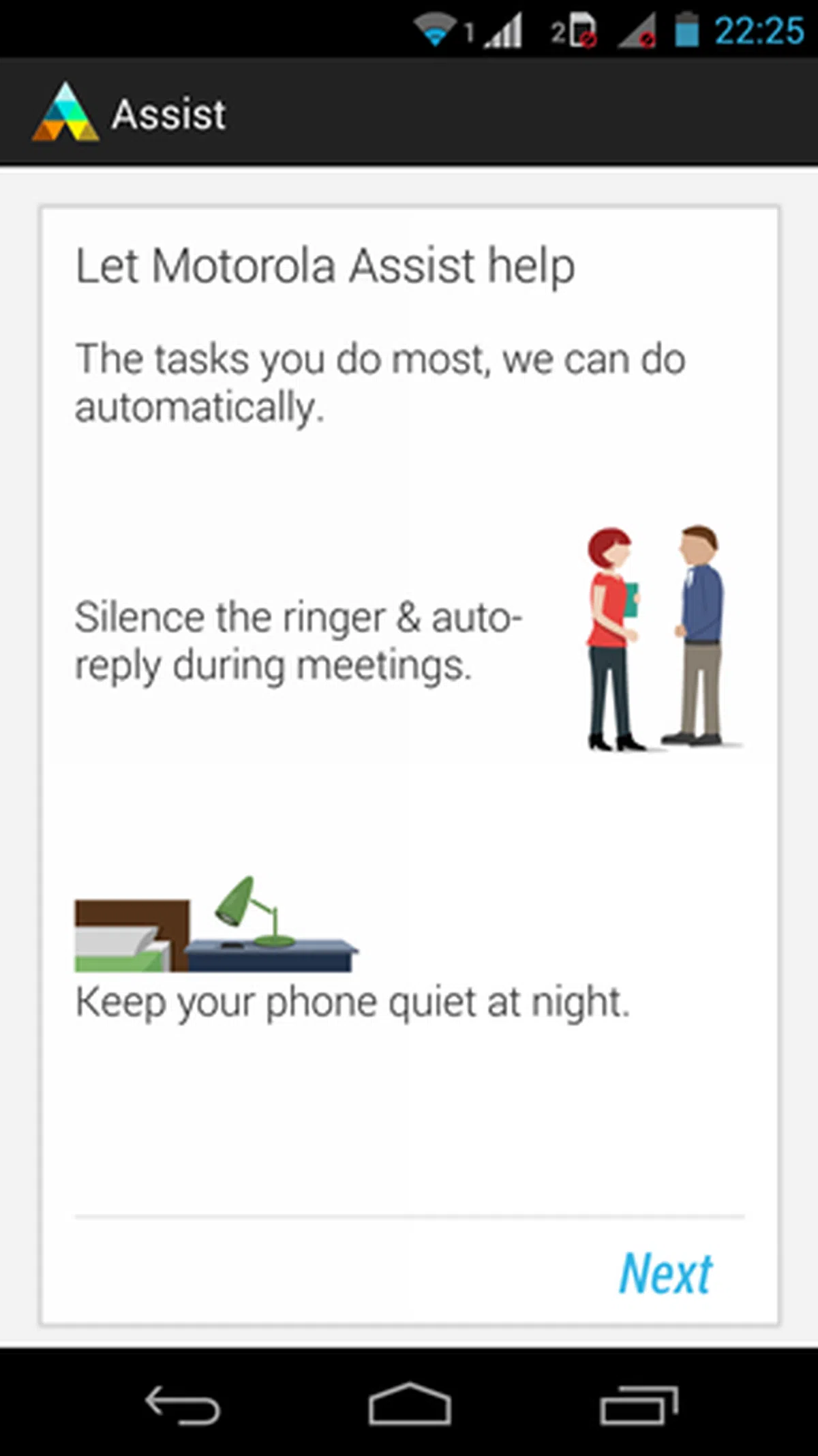 | 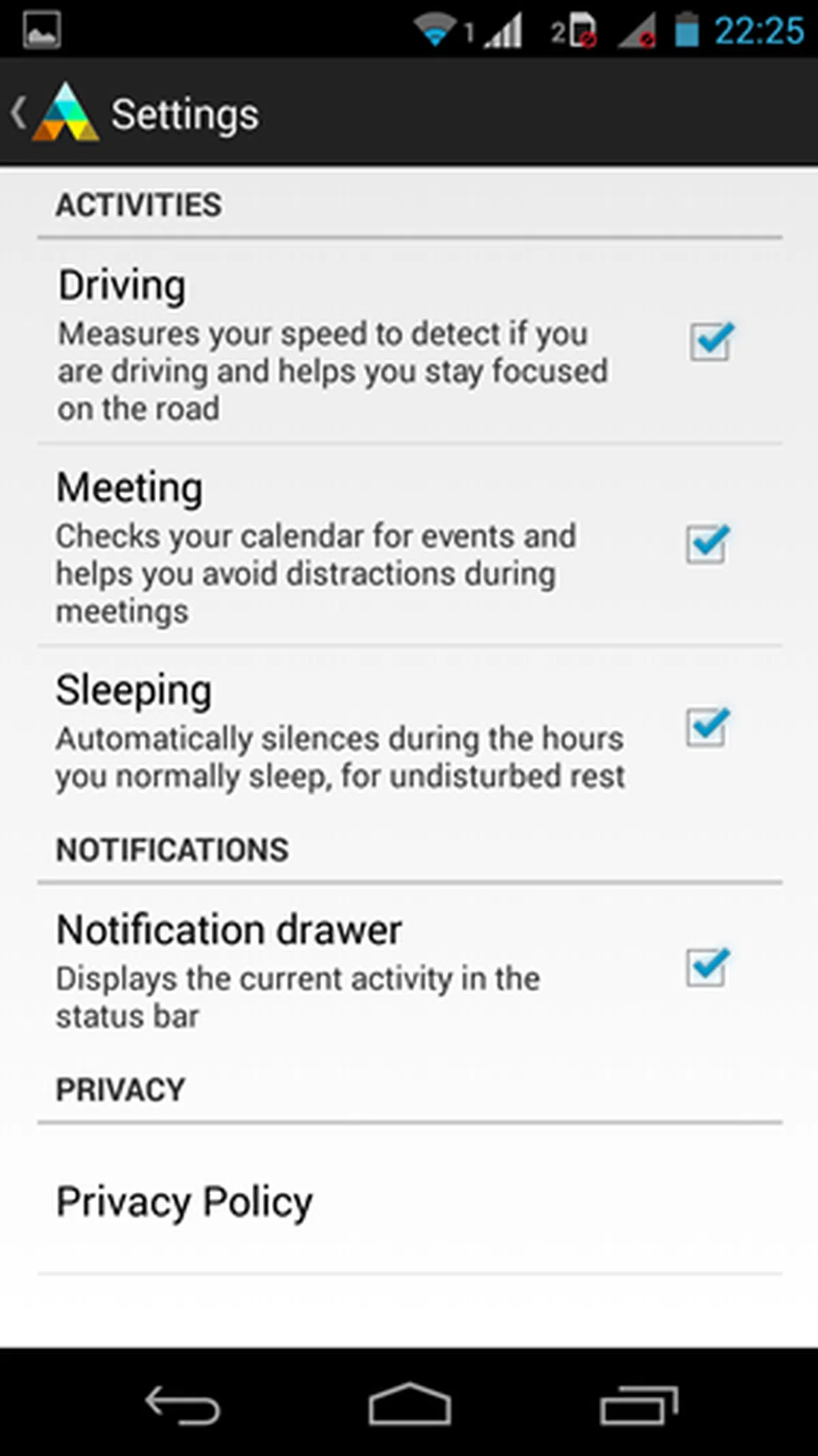 |  |

Motorola Migrate on the other hand helps you transfer photos, videos, music, volume, screen brightness settings, call and text history as well as SIM contacts from your old Android smartphone to the Moto G. Migrate only transfers data from devices running Android 2.2 (Froyo) and above, to Motorola phones running Android 4.2 and above.
According to Motorola, it takes about 10 minutes to transfer 2GB of data. The Moto G sold in Singapore is the 8GB version, which has about 5.52GB of user available storage after updating the stock Android apps. Hence, watch out for the amount of data that you can transfer from your old phone to the Moto G. We did give Motorola Migrate a try with our Nexus 4, and found the entire process to be smooth and straightforward. If you are a regular user of Google Drive, you will be glad to know that Motorola offers 50GB free storage for two years.
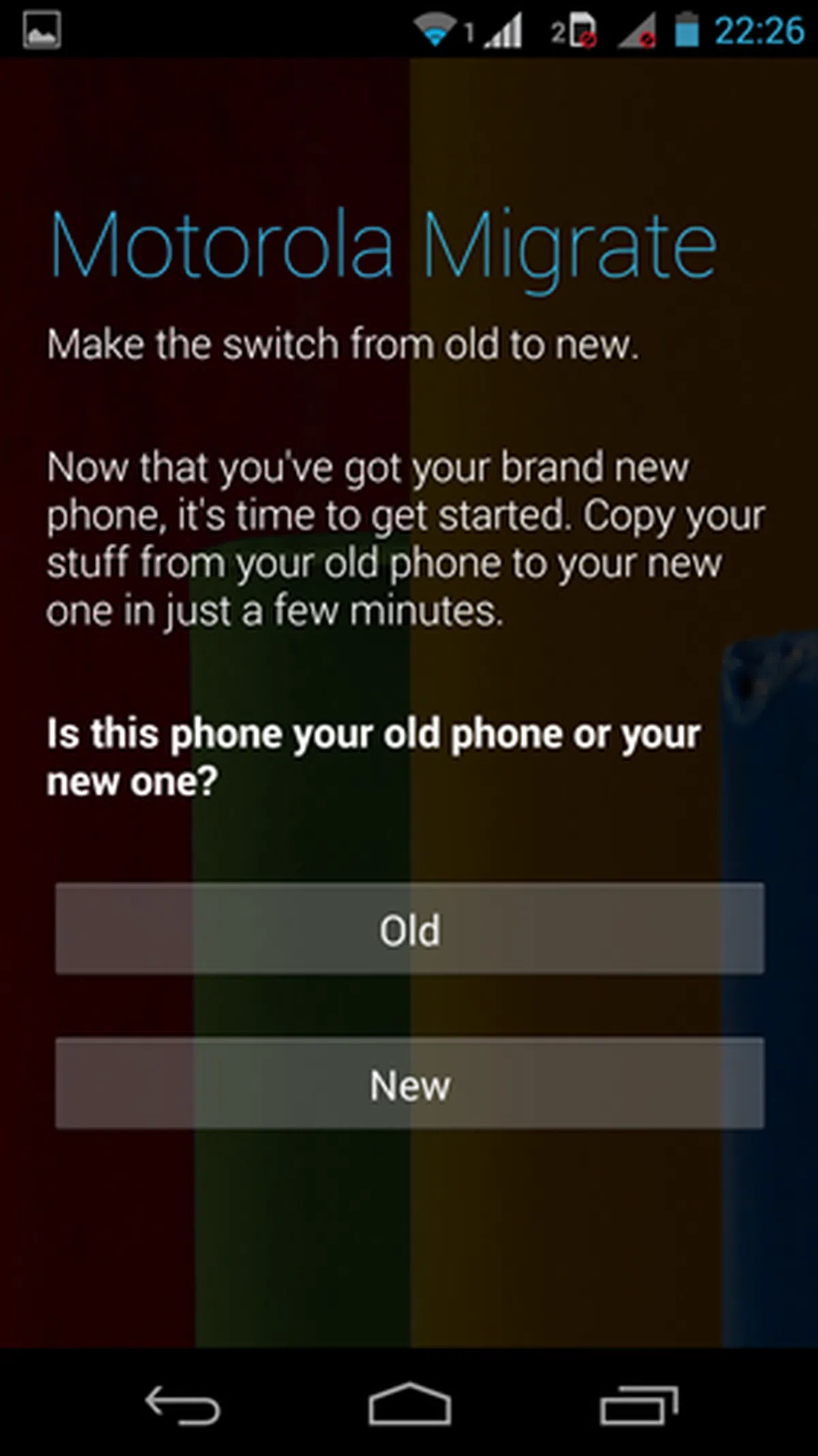 | 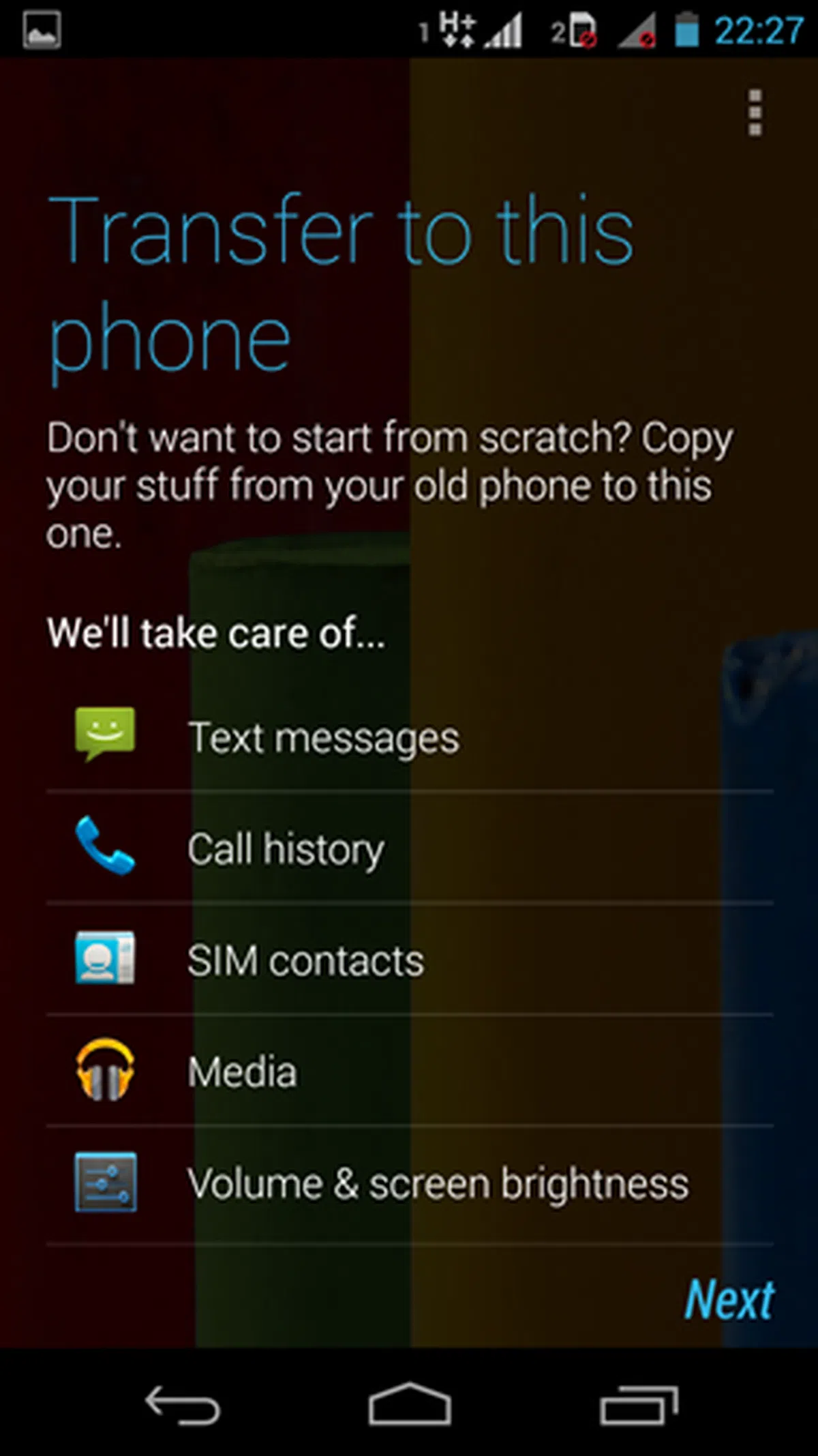 | 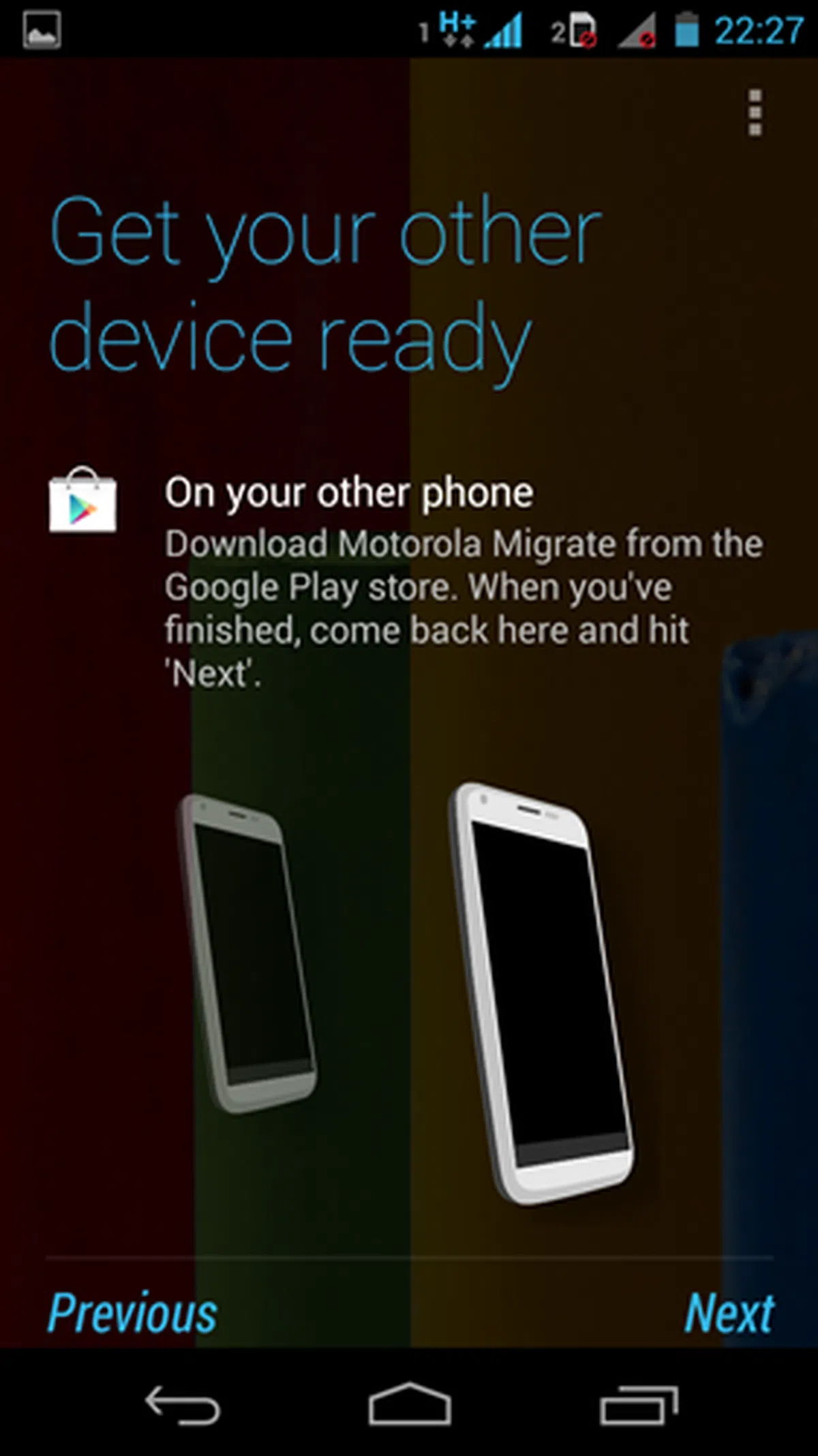 |

Performance Benchmarks
The Moto G is powered by a Qualcomm Snapdragon 400 quad-core 1.2GHz processor and 1GB RAM, which isn't too shabby for a phone at this price.
We will be comparing the Moto G against other phones of its class which include the Desire 601, LG Optimus F5, Samsung Galaxy S4 Mini and Sony Xperia SP. While we understand that Samsung has other models that are closer in price range to the Moto G, we did not have a chance to review these models.
Quadrant Results
Quadrant evaluates a device's CPU, memory, I/O and 3D graphics performances. The Moto G leads the pack in the Quadrant benchmark with a score of 8,562. As a point of comparison, the Moto G outperformed the one-year-old 5-inch Sony Xperia Z (7615) in this benchmark.

3DMark Results
Originally developed as a PC benchmarking tool, 3DMark is now expanded to support multiple platforms including Android OS. The Ice Storm benchmark is designed for smartphones, mobile devices and ARM architecture computers.
For an in-depth understanding of 3DMark for Android, do head over to our article, "3DMark - Android Device GPU Performance Review." In a nutshell, 3DMark consists of two test sections:
3DMark Ice Storm is an OpenGL ES 2.0 benchmark test that uses fixed off-screen rendering at 720p then scales the output to fit the native display resolution of your device. Ice Storm includes two graphics tests designed to stress the GPU performance of your device and a physics test to stress its CPU performance.
3DMark Ice Storm Extreme raises the off-screen rendering resolution to 1080p and uses higher quality textures and post-processing effects to create a more demanding load for the latest smartphones and tablets.

The Moto G had the most consistent 3DMark scores among the phones compared. It may not beat the Adreno GPUs found in Snapdragon 600-equipped phones, but it's decent enough.
SunSpider Javascript
SunSpider Javascript measures the browsing performance of a device. It not only takes into consideration the underlying hardware performance, but also assesses how optimized a particular platform is at delivering a high-speed web browsing experience. The Moto G performed above average in this benchmark, coming in third after the Nokia Lumia 625 and Samsung Galaxy S4 Mini.

For day-to-day usage, we find the speed of operation on the Moto G to be surprisingly fast. Although it is apparent that the Nexus devices are the most fluid in terms of user experience, we are impressed with how well the Moto G performed for its specs. Clearly, this has to do with the heavy optimization that's applied on the software side.
Imaging Performance
The Moto G is equipped with a 5-megapixel rear camera with a LED flash and a front-facing 1.3-megapixel camera. While these specs are nothing to shout about, the camera interface deserves a special mention.

The camera interface of the Moto G is more intuitive than most Android smartphones including Google's Nexus devices.
Overall, it's quite easy to get a hang of the interface. Swiping in from the left of the display brings up settings where you can enable HDR, flash, tap to focus and expose, slow motion video, panorama, location, change aspect ratio (16:9 to 4:3) and shutter sound.
Swiping in from the right side brings you straight to the gallery. What we really like about Moto G's camera interface is its ability to tap on any area to snap a photo, making the experience a fun and natural one.

The image quality is decent, although details are fuzzy along the edges and the photo lacks punch colors.
Battery Performance
Our standard battery test for mobile phones includes the following parameters:
• Looping a 800 x 480-pixel video with screen brightness and volume at 100%
• Wi-Fi and Bluetooth connectivity turned on
• Constant data streaming through email and Twitter


The Moto G lasted 6 hours and 32 minutes in our standard battery test, which is considered above average among the phones compared. While it has a 4.5-inch HD display with a rather small battery capacity, it's able to outlast phones with smaller, lower resolution displays and larger battery capacities. This is evident in the Power Consumption chart where the Moto G registered the second lowest power consumption among the six phones.
Portability
We measure the portability of a device by calculating its battery life to (weight x volume) ratio. The Moto G also ranks above most of its peers; its good battery life and compact form factor translate to a good overall score.

In a gist, can the Moto G last a day of heavy usage? For this reviewer, the answer is yes.
Conclusion
Is the Moto G the smartphone choice for the next 500 million consumers? We think so.
While consumers in developed countries desire fast speeds, speedy mobile connectivity and other high-end specs, the Moto G fits the bill for the next 500 million consumers who are jumping on the smartphone bandwagon for the first time and who want a phone that provides a smooth user experience without burning a hole in their pocket. The latest and greatest specs do not excite them, but a phone that gives them plenty of bang for the buck does.
The lack of 4G LTE connectivity, average imaging performance and limited storage space can be frustrating, but the Moto G offers much more than what its price tag suggests. It's hard to not be tempted by the S$318 price tag as there is hardly any equal in this price category. (That said, this same version sells in the U.S. for US$179.)
Still, within the Android camp and in Singapore, most phones of this class are priced closer to S$500. Beyond the Android family, the closest competitor is the Windows Phone 8-powered Lumia 625 which costs about S$80 more. It has a bigger display with a lower resolution, boasts comparable performance and has a micro-SD card slot. But if you're attracted to Android, the latter is a non-starter in the first place.
The Moto G is tentatively scheduled for a launch in Singapore on January 16 (yes, about a week from now!). A Brightstar spokesperson told HardwareZone that the company is working to bring the device into the local market as early as possible.
Hello again, Moto.
Our articles may contain affiliate links. If you buy through these links, we may earn a small commission.